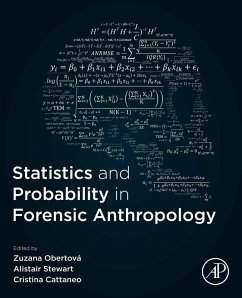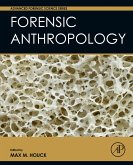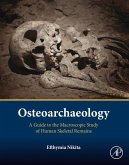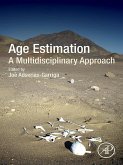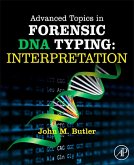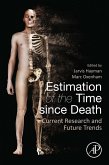Statistics and Probability in Forensic Anthropology provides a practical guide for forensic scientists, primarily anthropologists and pathologists, on how to design studies, how to choose and apply statistical approaches, and how to interpret statistical outcomes in the forensic practice. As with other forensic, medical and biological disciplines, statistics have become increasingly important in forensic anthropology and legal medicine, but there is not a single book, which specifically addresses the needs of forensic anthropologists in relation to the research undertaken in the field and the interpretation of research outcomes and case findings within the setting of legal proceedings.
The book includes the application of both frequentist and Bayesian statistics in relation to topics relevant for the research and the interpretation of findings in forensic anthropology, as well as general chapters on study design and statistical approaches addressing measurement errors and reliability. Scientific terminology understandable to students and advanced practitioners of forensic anthropology, pathology and related disciplines is used throughout. Additionally, Statistics and Probability in Forensic Anthropology facilitates sufficient understanding of the statistical procedures and data interpretation based on statistical outcomes and models, which helps the reader confidently present their work within the forensic context, either in the form of case reports for legal purposes or as research publications for the scientific community.
The book includes the application of both frequentist and Bayesian statistics in relation to topics relevant for the research and the interpretation of findings in forensic anthropology, as well as general chapters on study design and statistical approaches addressing measurement errors and reliability. Scientific terminology understandable to students and advanced practitioners of forensic anthropology, pathology and related disciplines is used throughout. Additionally, Statistics and Probability in Forensic Anthropology facilitates sufficient understanding of the statistical procedures and data interpretation based on statistical outcomes and models, which helps the reader confidently present their work within the forensic context, either in the form of case reports for legal purposes or as research publications for the scientific community.
- Contains the application of both frequentist and Bayesian statistics in relation to topics relevant for forensic anthropology research and the interpretation of findings
- Provides examples of study designs and their statistical solutions, partly following the layout of scientific manuscripts on common topics in the field
- Includes scientific terminology understandable to students and advanced practitioners of forensic anthropology, legal medicine and related disciplines
Dieser Download kann aus rechtlichen Gründen nur mit Rechnungsadresse in A, B, BG, CY, CZ, D, DK, EW, E, FIN, F, GR, HR, H, IRL, I, LT, L, LR, M, NL, PL, P, R, S, SLO, SK ausgeliefert werden.

